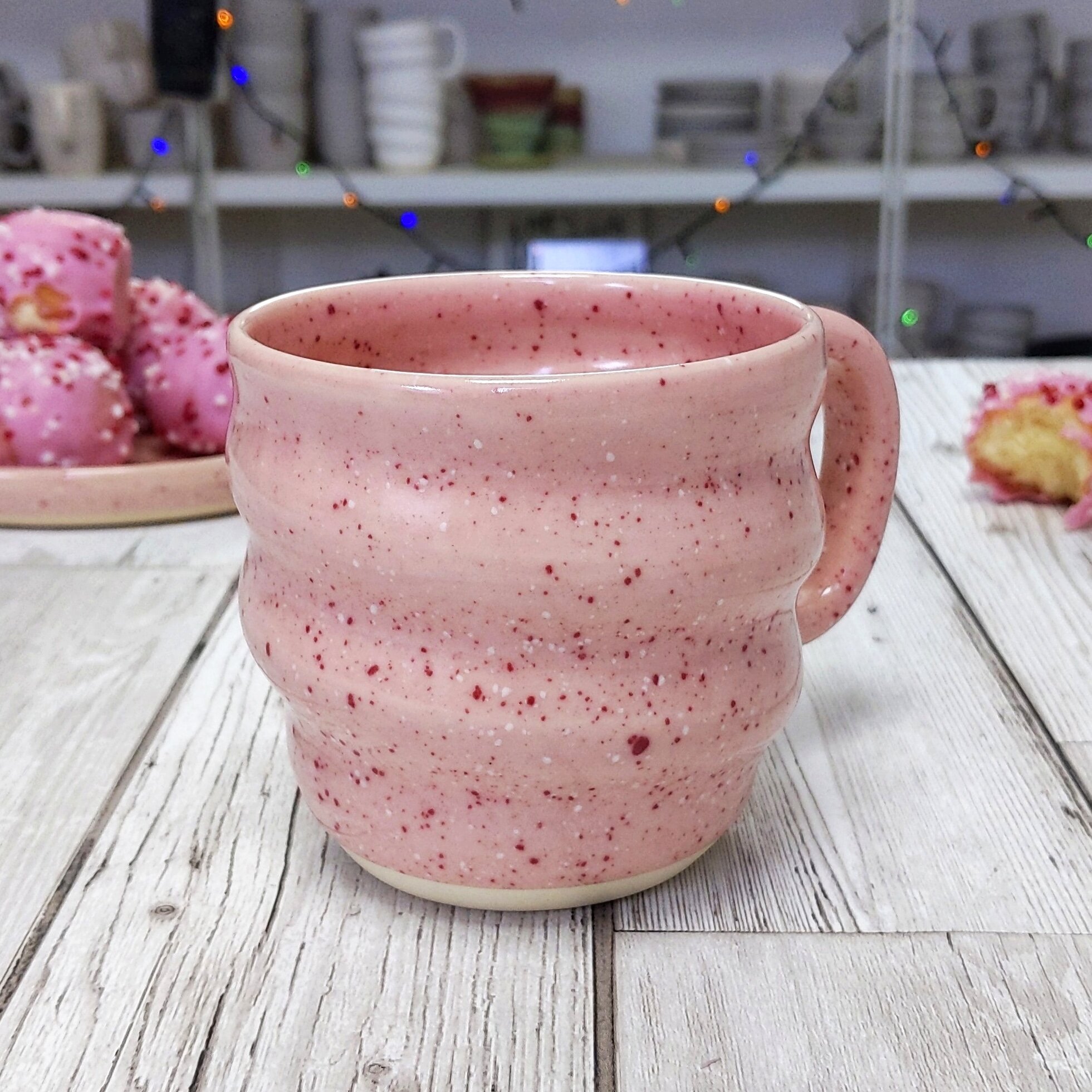Specktacular Pink Glaze
This is the Limited Edition glaze I used for Valentine’s Day 2021, and it’s a pink base glaze with darker pink and white speckles.
It’s a continuation of the sintered glazes I’ve been playing with over the last year or so. There’s a full explanation and demonstration in the video below but basically the idea is that glazes can be sintered in much the same way that clay is bisqued.
By firing to a slightly lower temperature you can cause the glaze to change properties in a very similar way to clay before and after bisque firing, in that the glaze is fixed in it current shape and can no longer return to being a normal glaze with the addition of water.
This means you can dry out a glaze, break it into small (or large) chunks, and after sintering they will retain that shape when added back into another glaze mix. This allows you to add specks of one colour to a glaze of another and have them retain the speckled appearance when fired. This is also possible by using course grades of colourants such as iron or manganese, but the advantage to using sintered glazes is that you can open up a much wider range of colours.
The recipes here are designed for a cone 06 bisque to sinter the sprinkles, and a cone 6 glaze firing, but the technique will work at any cone if you can get the chemistry right for both parts.
Base recipe
Speckle recipe
How to make the sintered speckles:
Mix up the recipe as a liquid glaze.
Leave the glaze to dry.
Break the glaze up into the size of chunks you want the specks to be. I use a kitchen sieve to make sure they’re smaller than about 1mm.
Put in an unwanted bowl and bisque fire to 1000c.
Check that they are no longer able to dissolve in water. If they can, you might have to spread them out as a thinner layer and rebisque. It takes a certain amount of heatwork to sinter them and this can be done over several firings if one isn’t enough.
Add them to a glaze mix. This can now be poured, dipped, or brushed. Alternatively they can be scattered by hand over a freshly glazed pot.
Both colours of pink are done with Mason stains (6000 for the base, 6002 for the speckles). This is because the silica and alumina level needs to be relatively high to make the glaze stiff enough not to run and smear the specks, and bright chrome-tin pinks are easier at lower levels.
This should work with stains and non-fluxing colourants, so there will be a very wide range of possible colours for both the base and speckles. It will also work with fluxing colourants if you take them into account and adjust the chemistry if needed. I highly recommend taking a CMW class if you want to know how to do that.
Please try it and let me know how you get on, message me or use the hashtag oldforgecreations (I often miss @mentions on Instagram and there's no way to find them afterwards, but I'll see the tag). Good luck!
If you like this sort of content and want to support the creation of more, I now have a Patreon specifically for it or a page on my website if you just want to make a single donation.









